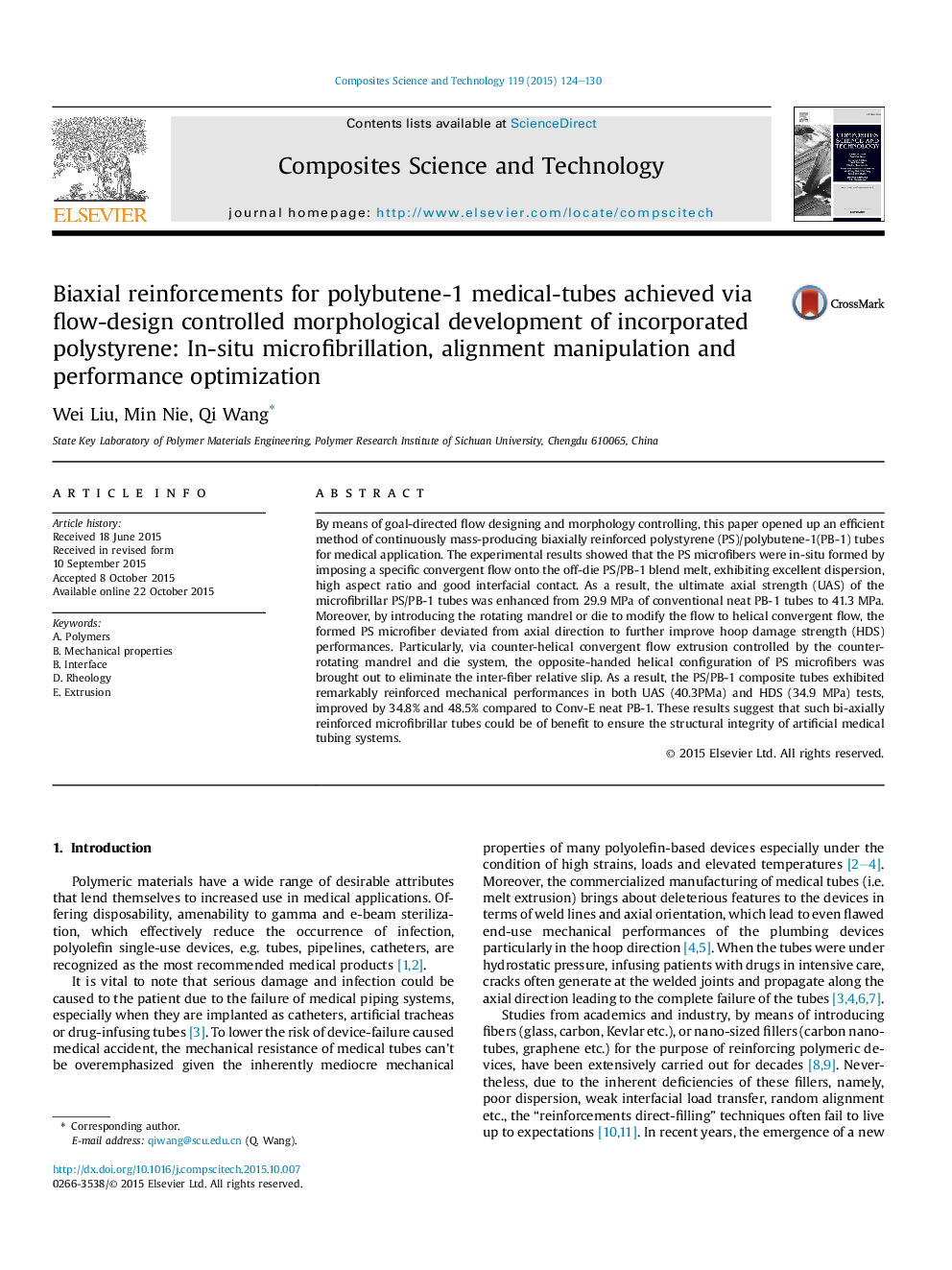| Article ID | Journal | Published Year | Pages | File Type |
|---|---|---|---|---|
| 820074 | Composites Science and Technology | 2015 | 7 Pages |
By means of goal-directed flow designing and morphology controlling, this paper opened up an efficient method of continuously mass-producing biaxially reinforced polystyrene (PS)/polybutene-1(PB-1) tubes for medical application. The experimental results showed that the PS microfibers were in-situ formed by imposing a specific convergent flow onto the off-die PS/PB-1 blend melt, exhibiting excellent dispersion, high aspect ratio and good interfacial contact. As a result, the ultimate axial strength (UAS) of the microfibrillar PS/PB-1 tubes was enhanced from 29.9 MPa of conventional neat PB-1 tubes to 41.3 MPa. Moreover, by introducing the rotating mandrel or die to modify the flow to helical convergent flow, the formed PS microfiber deviated from axial direction to further improve hoop damage strength (HDS) performances. Particularly, via counter-helical convergent flow extrusion controlled by the counter-rotating mandrel and die system, the opposite-handed helical configuration of PS microfibers was brought out to eliminate the inter-fiber relative slip. As a result, the PS/PB-1 composite tubes exhibited remarkably reinforced mechanical performances in both UAS (40.3PMa) and HDS (34.9 MPa) tests, improved by 34.8% and 48.5% compared to Conv-E neat PB-1. These results suggest that such bi-axially reinforced microfibrillar tubes could be of benefit to ensure the structural integrity of artificial medical tubing systems.
